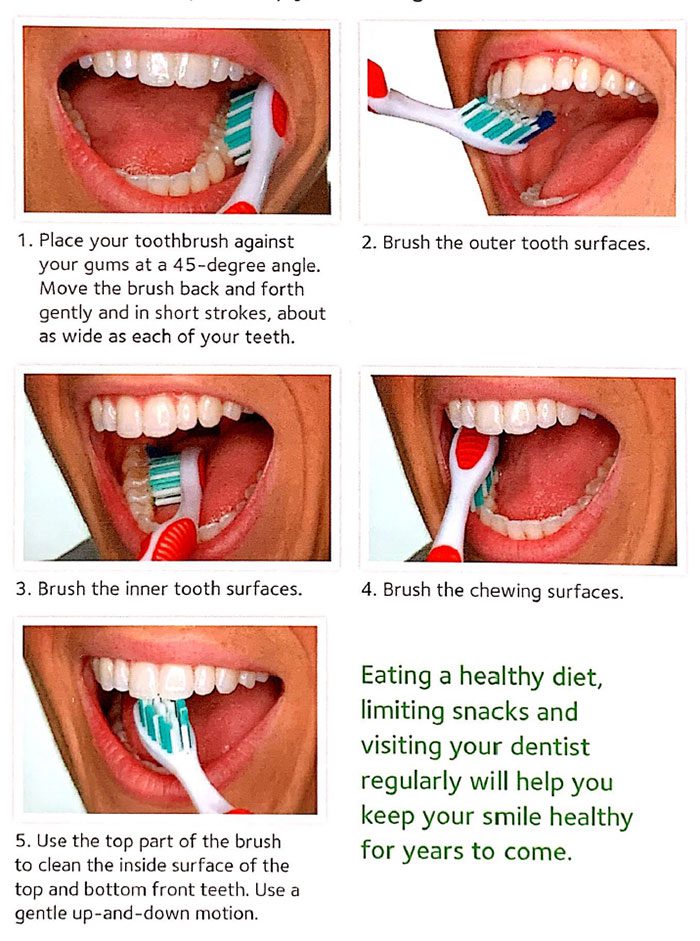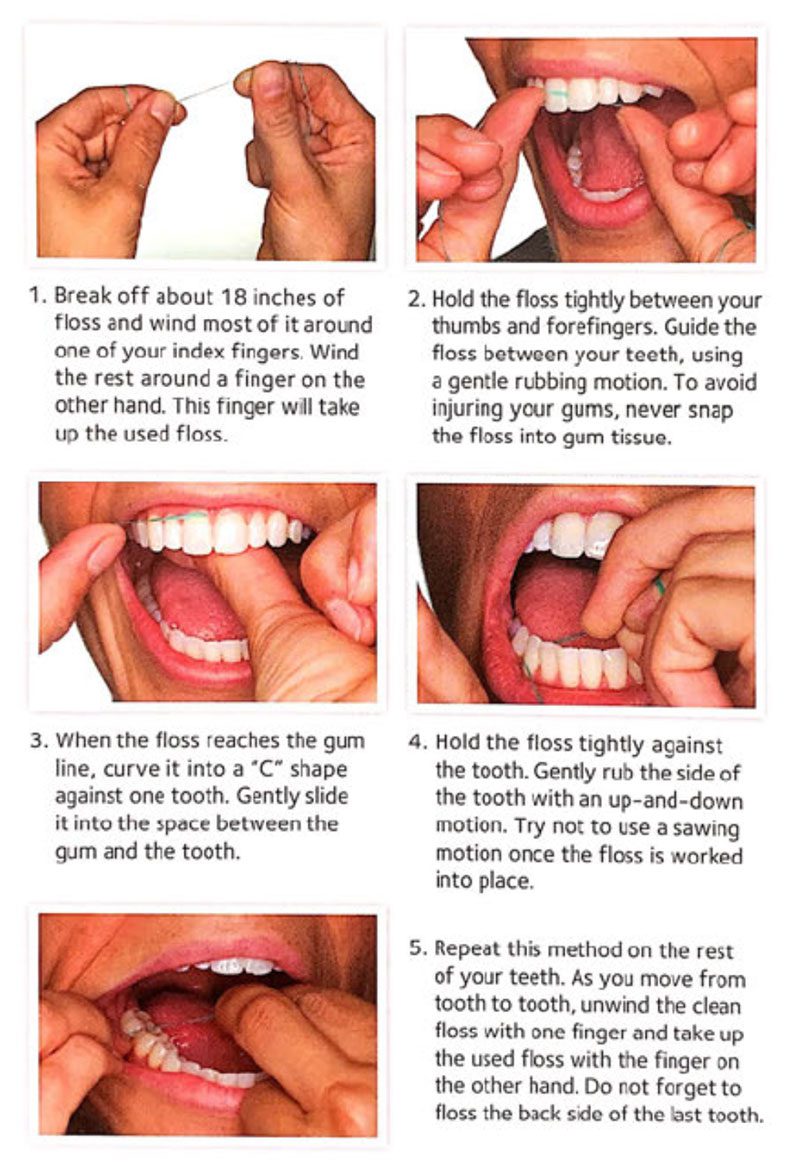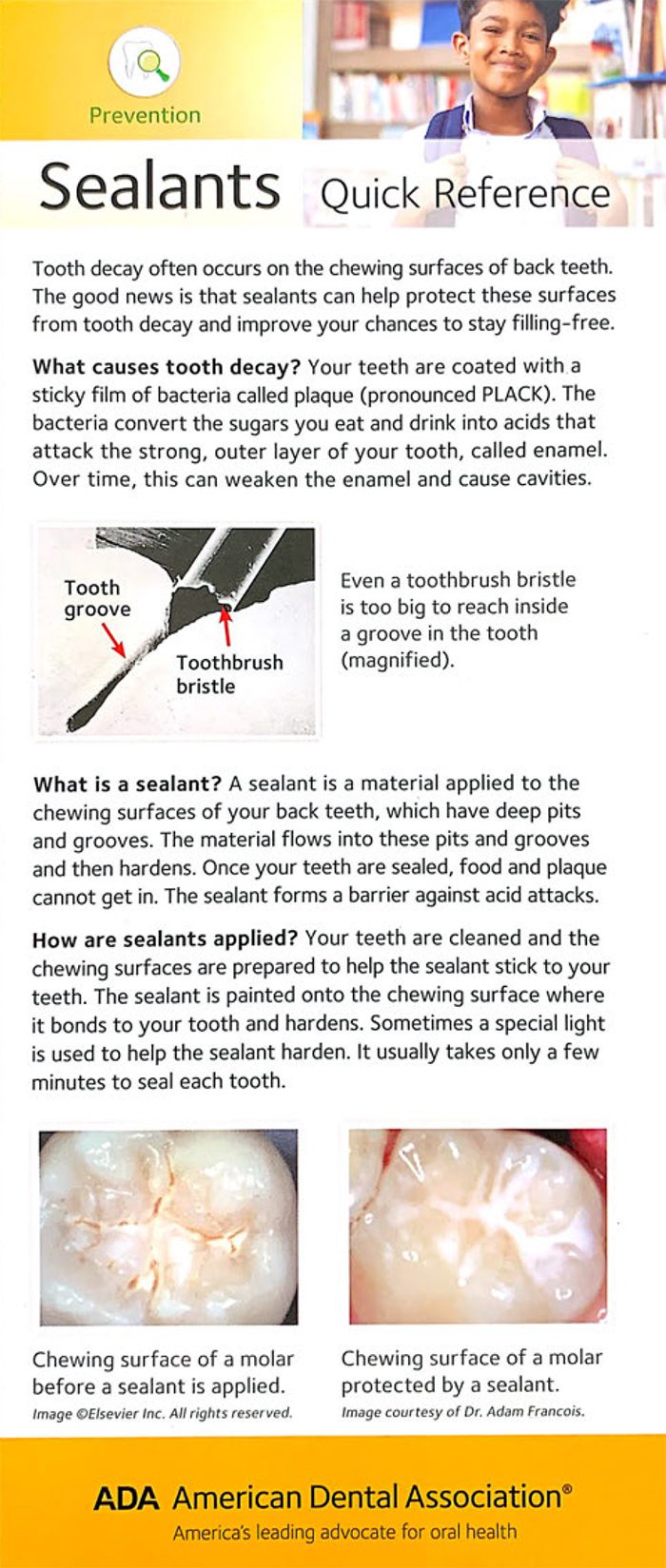Brushing
All teeth are coated with a sticky film of bacteria called plaque. The bacteria convert the sugars you eat and drink into acids that attack the outer layer of your tooth, called enamel. Over time, this can weaken the enamel and cause cavities.
Children of all ages should use toothpaste with fluoride and brush their teeth for approximately two minutes twice a day. Children under 3 should use no more than a smear of toothpaste while children 3-6 should use no more than a pea-size amount. Choose a soft-bristled toothbrush that fits comfortably in your child’s mouth. Replace the toothbrush every three months or sooner if the bristles are worn or frayed. Both manual and powered toothbrushes are effective at removing plaque.
Download the Prevention Brushing Brochure
Flossing
Cleaning between teeth with dental floss once a day will help remove food and plaque from under the gum line and the hard to reach places in-between the teeth. Many children need help learning to floss from parents demonstrating correct technique and being patient while they master this skill. Handheld flossers are equally effective and may be easier for some to use.
Download the Prevention Flossing Brochure
Sealants
Tooth decay often occurs on the chewing surfaces of back teeth due to the anatomy of the grooves and pitted areas. The good news is that sealants can help protect these surfaces from tooth decay and improve your chances to stay filling-free.
A dental sealant bonds and hardens in the deep grooves on the tooth’s surface, forming a barrier against bacteria and acid attacks. Once teeth are sealed, food and plaque cannot get in and brushing becomes more effective.
Sealants are typically applied to children’s teeth as a preventive measure against tooth decay. To apply, teeth are cleaned and the sealant is painted onto the chewing surface. A special light is used to help the sealant harden. It usually takes only a few minutes to seal each tooth.
Routine Visits
Preventative care visits are an important part of maintaining your child’s oral health. During your child’s visit, we will:
- Check for any problems that may not be seen or felt easily
- Look for cavities and signs of tooth decay
- Inspect the teeth and gums for gingivitis, periodontal disease, and any soft tissue pathology
- Evaluate maxillary and mandibular jaw growth and alignment
- Evaluate dental occlusion, alignment, and spacing
- Perform a thorough cleaning removing plaque and calculus
Your child’s exam will generally take 30-40 minutes. Visiting our office every six months helps create good oral care habits and helps to build a positive trusting relationship for children with their dental providers. Our team will answer any questions you have, review proper techniques for brushing and flossing, discuss helpful dietary tips, and share product knowledge that may allow you to more easily accomplish a daily dental care routine with your children.
We also offer fluoride treatments at your child’s cleaning appointment to help strengthen and remineralize teeth.
X-Rays
Many parents and caregivers worry about radiation exposure during dental x-rays. New digital radiograph technology produces instantaneous, precise imaging results and emits 80% less radiation than traditional X-rays.
X-rays are an important tool in identifying issues beneath the surface, like cavities, jaw pathology, extra or missing teeth, bone defects, tumors, and cysts. They help us evaluate growth and development as well as develop a treatment plan before a dental procedure or check on the progress of a previous procedure.review proper techniques for brushing and flossing, discuss helpful dietary tips, and share product knowledge that may allow you to more easily accomplish a daily dental care routine with your children.
Even though digital X-rays are safe for kids, our team is mindful to only take X-rays when necessary. The most common types of dental X-rays are:
- Bitewing – images specific areas of the teeth, often used to identify tooth decay between teeth and at the gumline.
- Panoramic – images the head and neck area to check for head and neck pathology as well as evaluate growth, development, and tooth alignment of unerupted teeth.
- PA/Occlusal – captures the entire tooth and can be helpful in assessing pathology or sequence/timing of eruption of unerupted teeth.
Mouthguards
Injuries to the mouth are common among young athletes, and prevention is the first step in protecting your child’s smile. If your child participates in any kind of full-contact sport, the American Dental Association recommends he or she wear a mouthguard to protect the teeth, mouth, and gums.
Choosing the right mouthguard is essential. There are three basic types of mouthguards: the pre-made mouthguard, the “boil-and-bite” fitted mouthguard, and a custom-made mouthguard from the dentist. When choosing a mouthguard, be sure to pick one that is tear-resistant, comfortable, and well-fitted for your child’s mouth. It should be easy to keep clean and should never prevent your child from breathing properly. Our team can discuss how to choose the right mouthguard and wear it properly.




